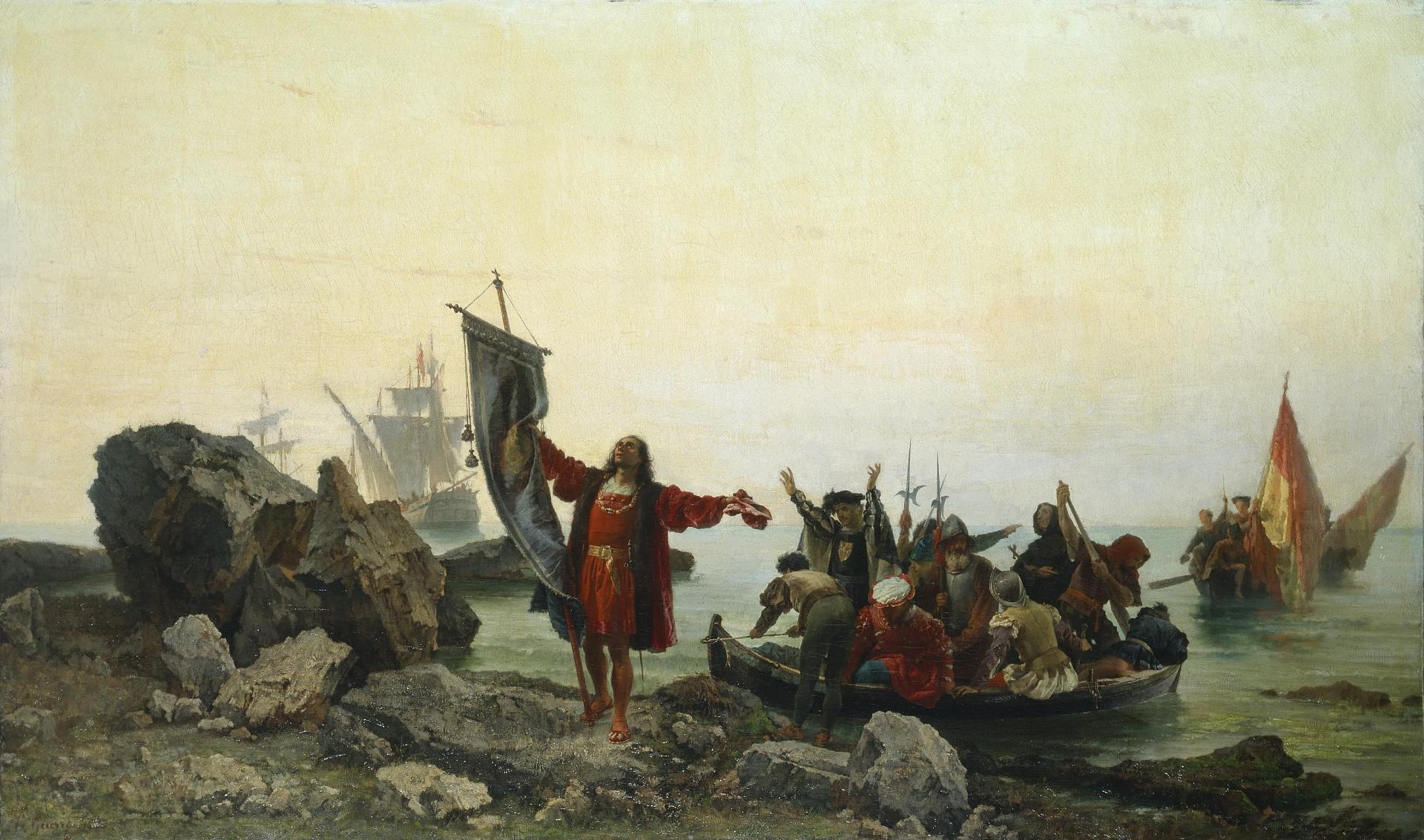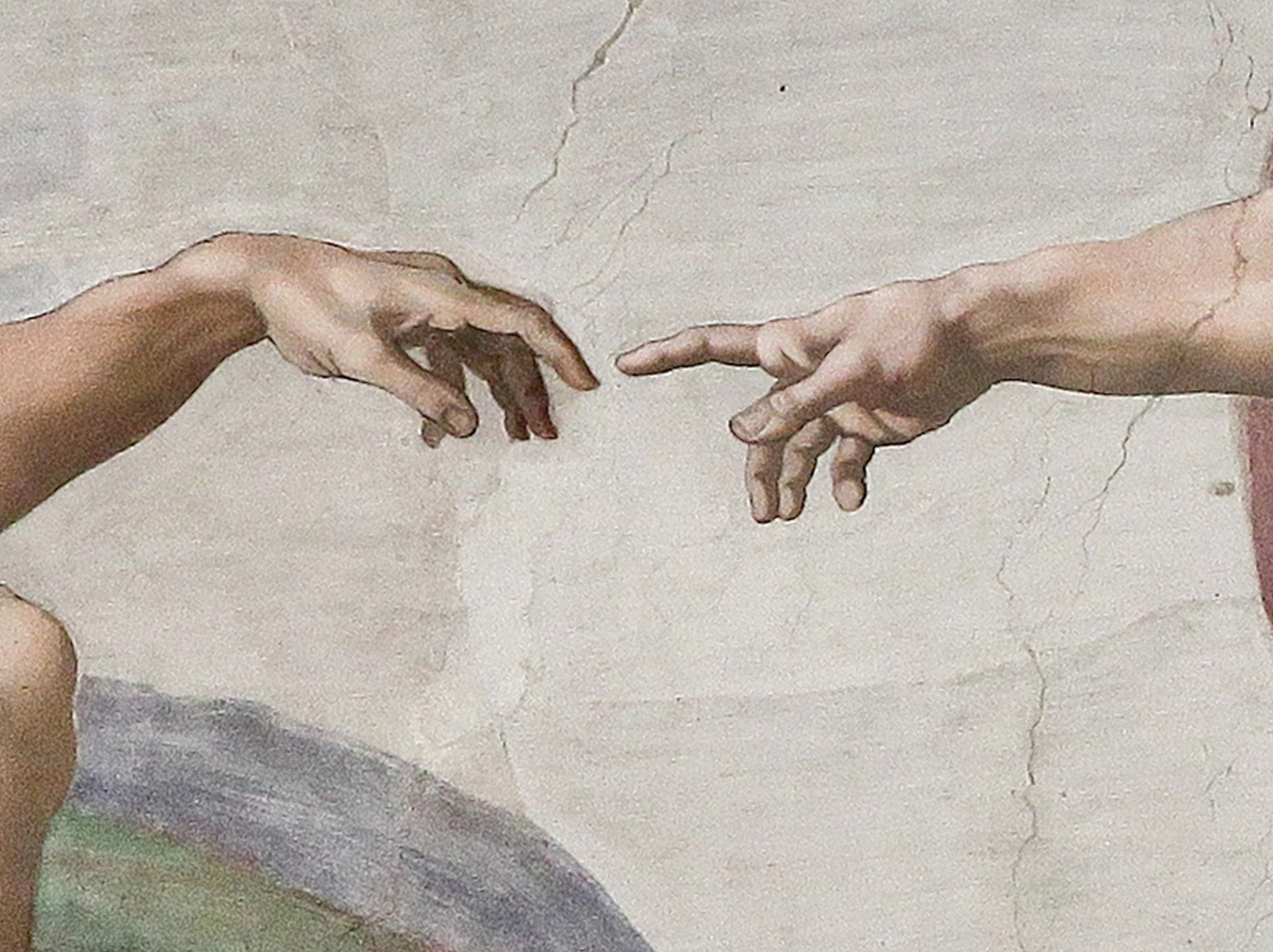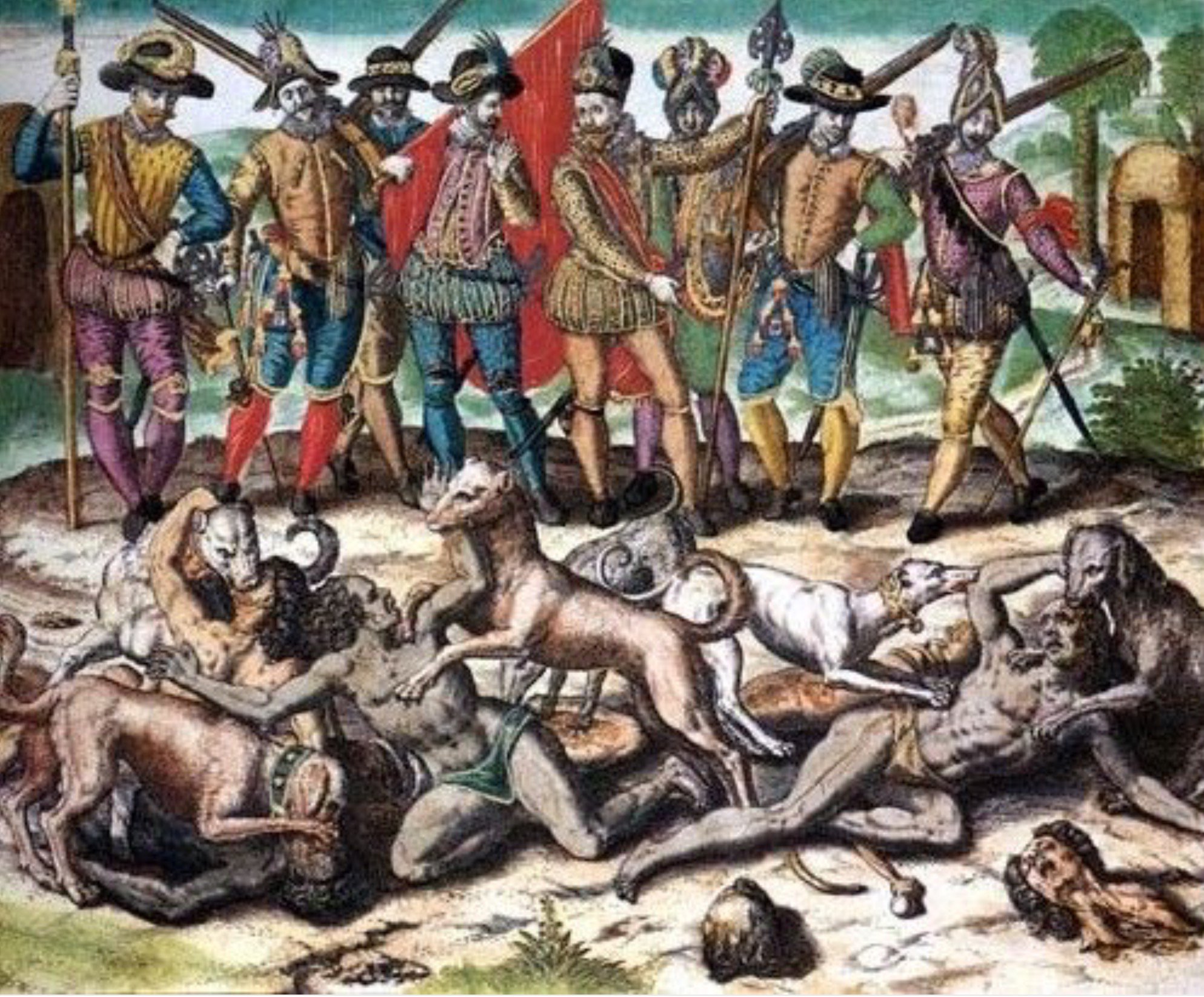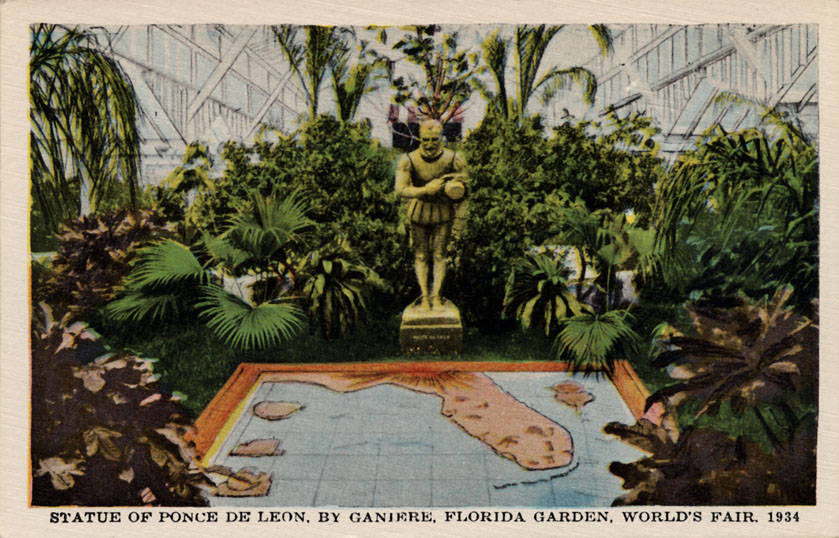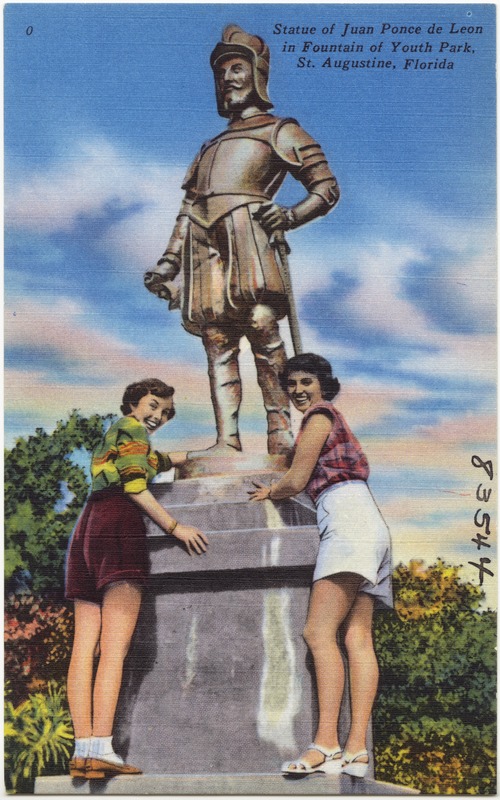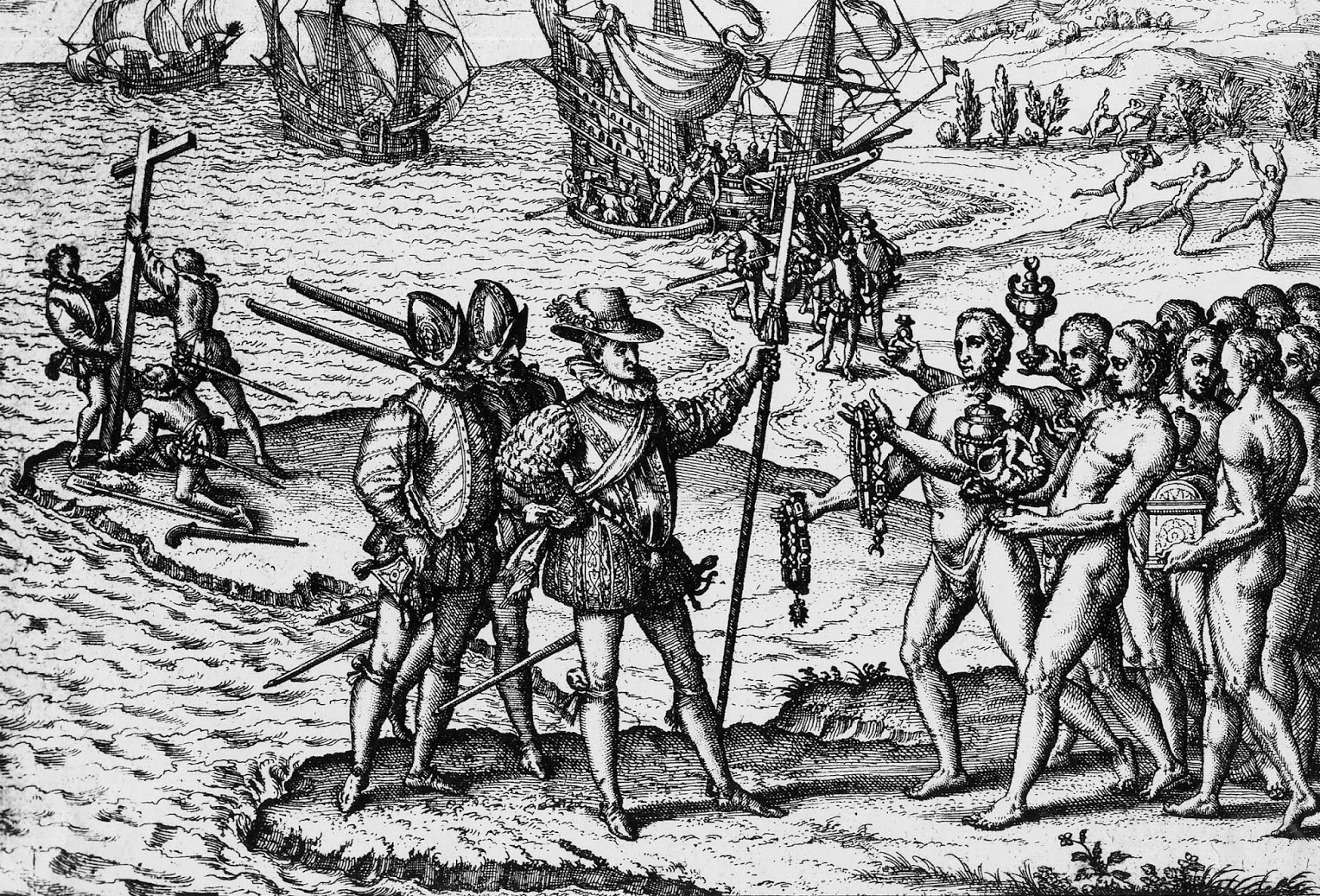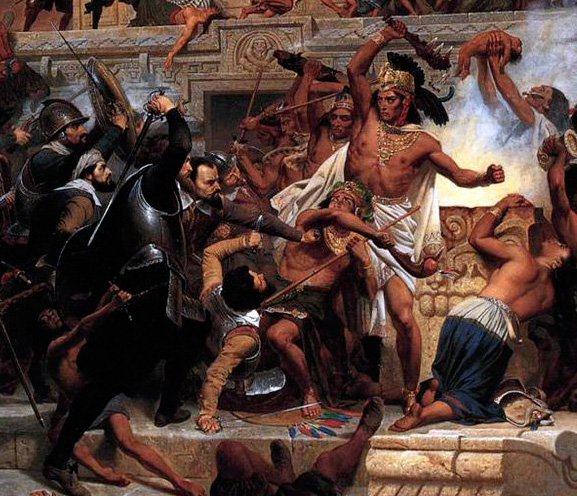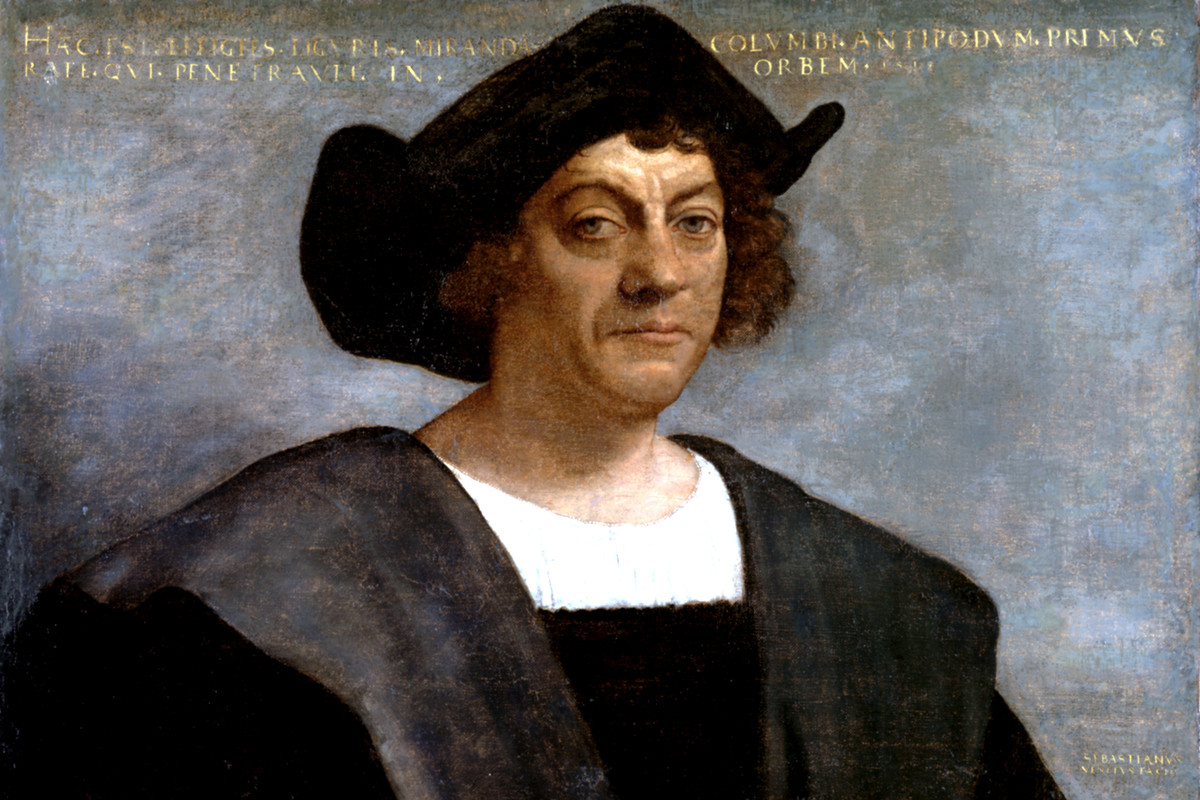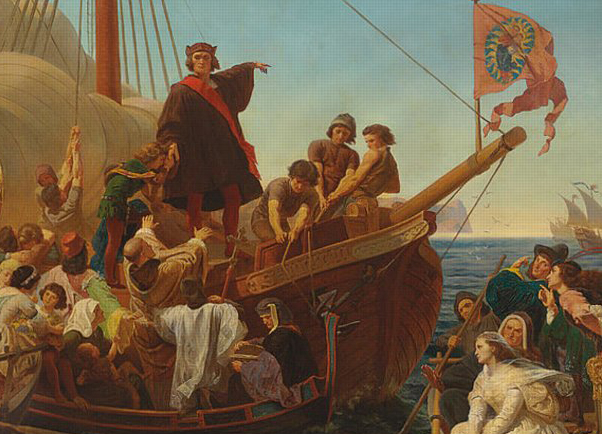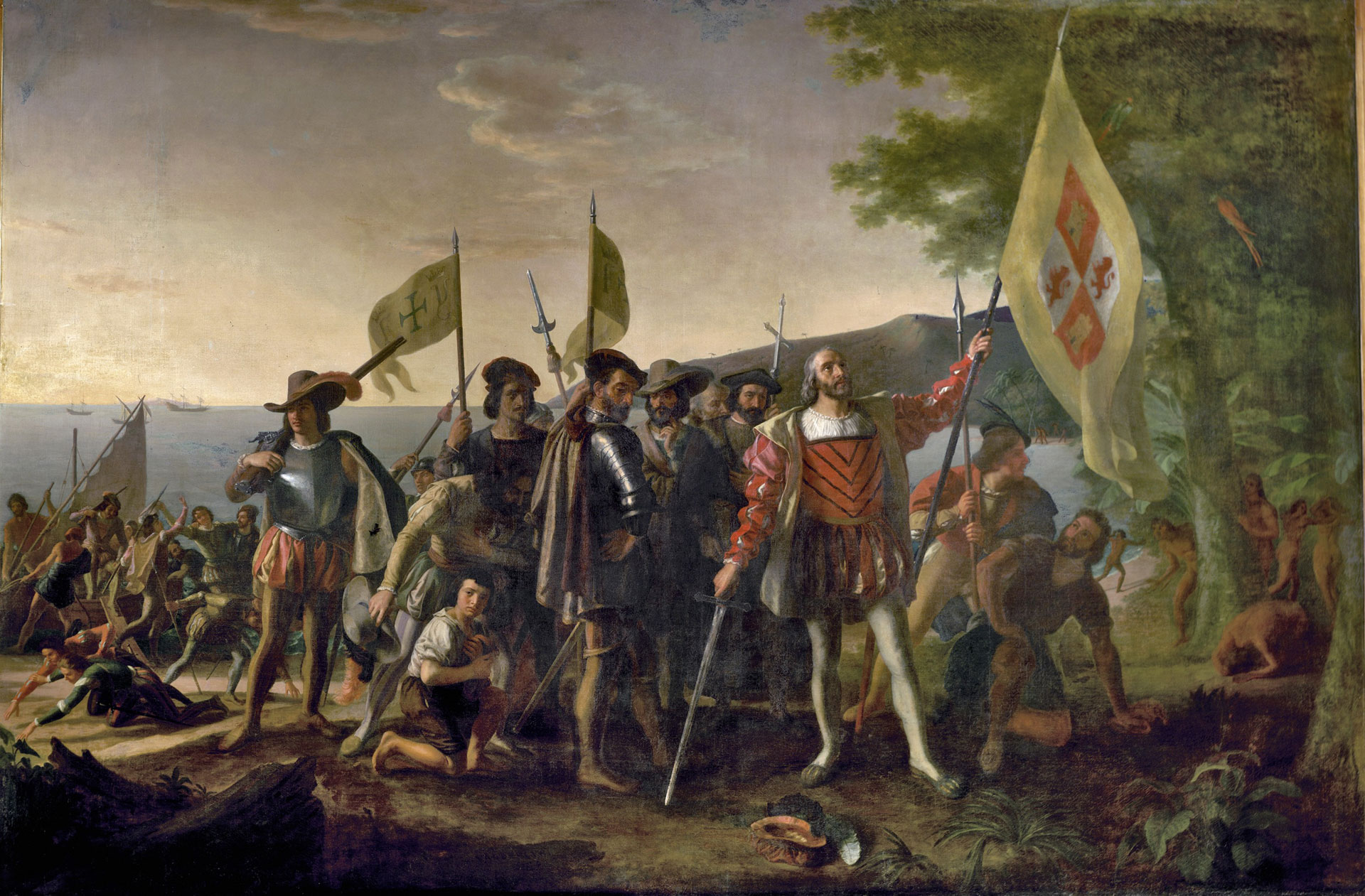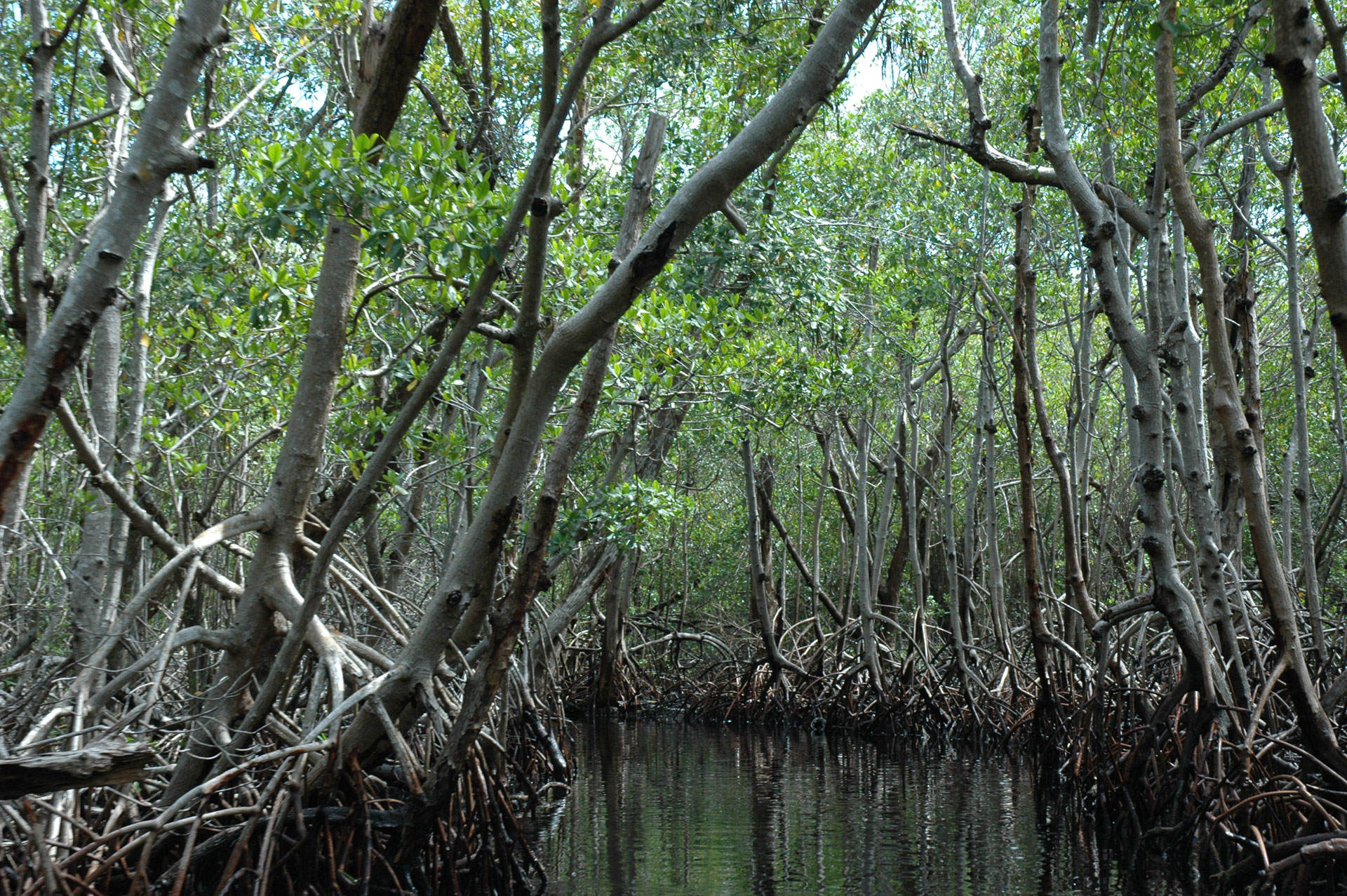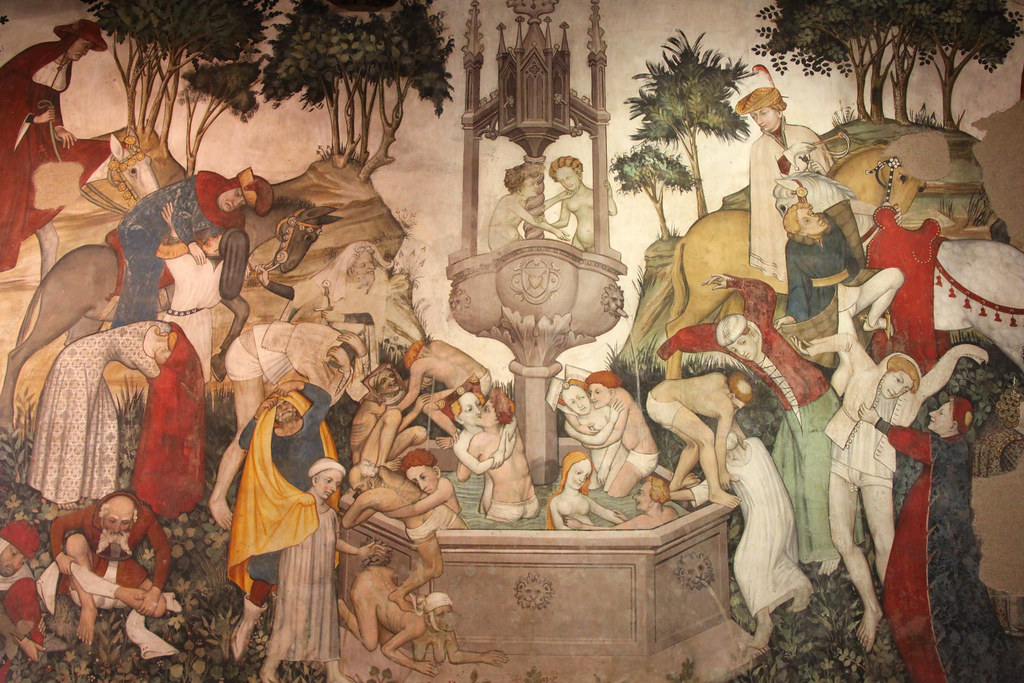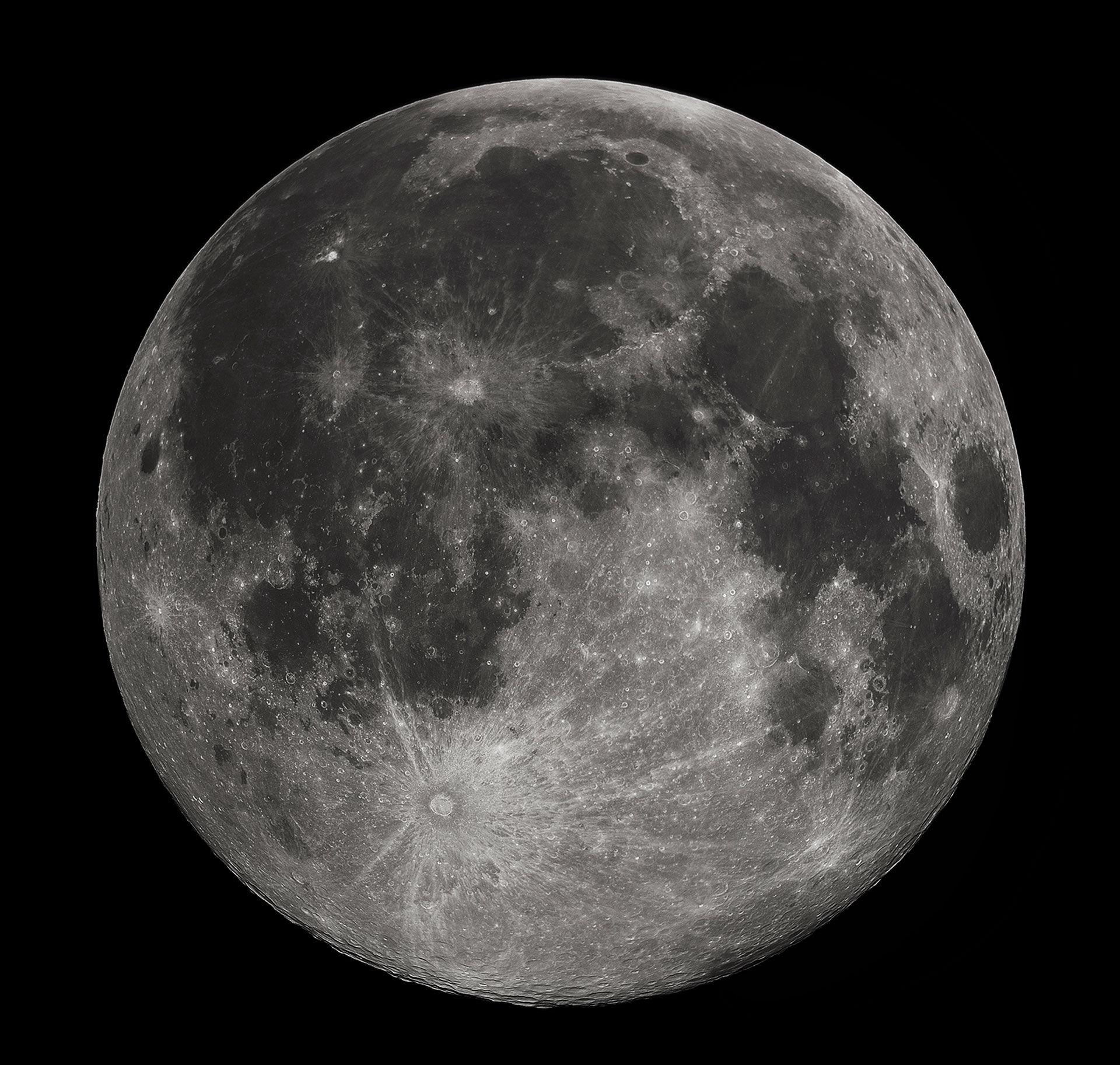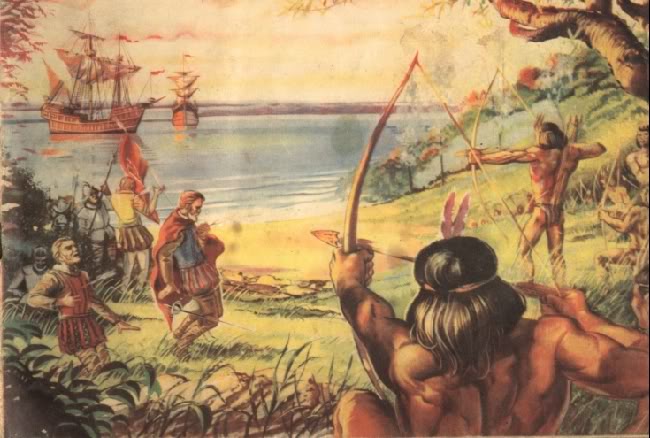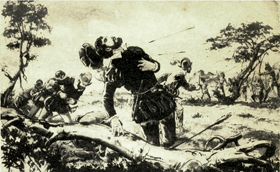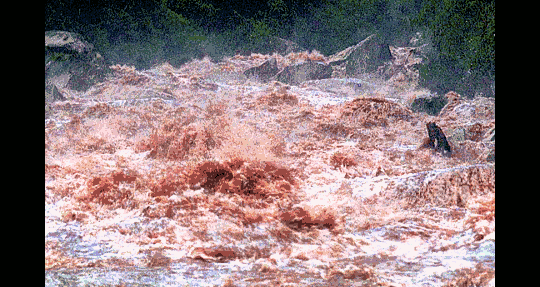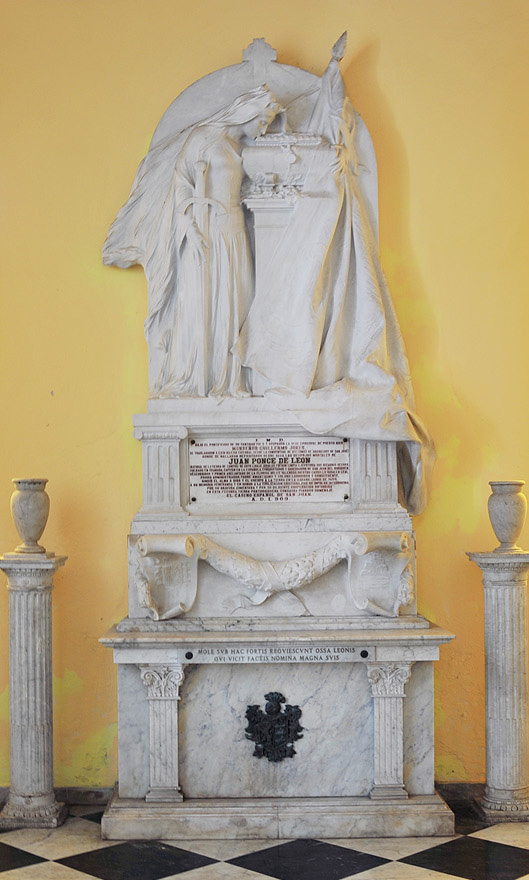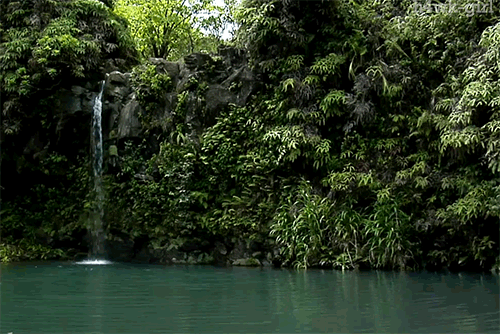
JUAN PONCE DE LEON & THE FOUNTAIN OF YOUTH
October 1512. It’s been 20 years since Columbus stumbled across his first white-sand beach. Machiavelli is writing The Prince, and Michelangelo has just painted the last brushstroke of Adam’s hand on the ceiling of the Sistine Chapel. Meanwhile, the Caribbean is churning.
The first governor of the island that would later be known as Puerto Rico is Juan Ponce de Leon. He sits impatient; languishing in the summer heat, straining his head out of his window to catch whatever breeze may pass. Before him, his many crop fields stretch out while the Spanish guards watch over his many slaves. Four years have passed since Juan arrived to look for gold. Across the water, beyond his many fields, he can see a yet untamed world, seething, crawling, beckoning. He sighs. As a younger man, he would stretch out his hand over land and make it his own. But Juan is getting older. Again, he dreams of stretching his hand out over the horizon, to the seething green. That is what made Juan’s heart leap. A heart that leaped less and less, slower and slower.
At least that is how I imagine him.
Everyone wants to know whether story of Juan Ponce de Leon and his search for the Fountain of Youth is fact or fiction. The truth is that the European written history is spotty. The indigenous oral history doesn’t exist. Within a hundred years of Juan the local population ceased to exist, wiped out by disease and war. There is no doubt about his explorations, but posterity has been kinder to his memory than the historical facts. But the historical Ponce de Leon doesn’t interest me. He is another branch on the rotten tree that sprung from Christopher Columbus. But then there is this mythical Juan, who commits hundreds of men and months to search for the unlikeliest of grails. And to have done it all in the swamps and jungles of Florida. Nevertheless, the backdrop to this story is one of violence. The story itself can easily be read as the absurd culmination of European greed. Perhaps Juan is the unwitting harbinger of the limits of his generation’s reach.
THE CHANGING OF HANDS
Just four years ago, the island of Puerto Rico (or San Juan Bautista at the time) belonged to the indigenous Taínos. When Juan and his men first arrived the Taínos didn’t think they could fight them, believing them to be immortal. It wasn’t until a few months later that in a blind fury, a captured slave dragged his Spanish guard into the water and drowned him. As the Spaniard thrashed wildly and then went still, the Taíno suddenly understood that the white man, like every other thing that crawls on the surface of the earth, can only stand water for so long. To the luckless Taíno the Spanish were a curse – a fuku -, borne on the shoulders of Juan.
“They say it came first from Africa, carried in the screams of the enslaved; that it was the death bane of the Taínos, uttered just as one world perished and another began; that it was a demon drawn into Creation through the nightmare door that was cracked open in the Antilles. Fuku americanus, or more colloquially, fuku —specifically the Curse and Doom of the New World.”
The days pass. The son of Christopher Columbus, Diego Columbus is churning. He has spent nearly his entire life clawing back the rights and privileges that were stripped from his father, now dead. Christopher had been a tyrant, a torturer and mutilator of the indigenous. Convinced fields of gold were nearby, any native person over the age of fourteen had to meet a gold quota he imposed. If they didn’t bring Columbus enough gold, he would have their hands cut off. Bartolome de las Casas summed it up:
“Such inhumanities and barbarisms were committed in my sight as no age can parallel… My eyes have seen these acts so foreign to human nature that now I tremble as I write.”
Denounced as too extreme, Christopher was stripped of his land and titles. Christopher would die, imagining himself the King of the Indies, never having recognized what was plainly before him. His son, a little more sure-footed, manages to wrestle the title of Governor away from Juan. Juan has had enough. No longer Governor, he has no reason to stay on the island. He is free to stretch out his now trembling hand once again over that unbearably green land.
He opens his wallet and out pours gold. Enough to finance a new expedition to sail north beyond what any European has ever seen. In the spring of 1513, Juan sets out on three small caravels with 200 men to claim his place in history as a discoverer of even newer worlds. As Juan’s ship pulls up anchor he looks back at the tropical island he once claimed as his own.
RUMOURS ABOUND
Juan’s trip is shrouded in mystery. What little we know of it comes to us through Spanish historians writing years after his death. We also know a thing or two from his letters to his friend, King Ferdinand. Juan is coy in his letters. He never reveals too much, dangling hints of discoveries of new lands, no doubt fishing for the financial support the King in turn dangled in front of Juan. He makes no mention of the famous fountain. But we do know Juan had heard of Juan Diaz de Solis; another famous Spanish explorer. During Solis’ expedition, some 325 leagues from what is now the Dominican Republic, the indigenous tribes had whispered about an island called Bimini. On this island was a fountain, and those who drank were made young again.
This was surely not the first time Juan had heard rumours of the fountain, a story commonly passed around in the Caribbean. But here, for the first time, was testimony from another explorer. It just so happened that Bimini was in the direction he was heading. It just so happened that Juan was getting older. It just so happened that he had spent the last few nights dreaming himself a younger man, the man he used to be when he first came across the ocean on Columbus’ ship.
It’s easy to laugh at such an idea – to search for the Fountain of Youth. But back then the world wasn’t so rigid. A few years before, Columbus had written about his encounters with mermaids. A few years after, hundreds of men would disappear into the Amazon looking for a fabled city of gold. Juan had already heard stories of dragons and sea monsters in the New World, so why shouldn’t there be a fountain?
AN ENDLESS SPRING
On April 2, 1513, Juan and his men reach new land. They think they’ve found the island of Bimini, but in actuality they’ve found the American Panhandle. They name it “La Florida”, which means the land of flowers. Shortly after landing, the Spanish were approached by the Calusa tribe. The Calusa had already heard about the Europeans as boats of indigenous Cuban refugees had reached their shores - a story that would repeat itself several more times in history. By now they have heard the rumours. Not of the fountain, but that the Spanish are rounding up slaves; that a strange sickness takes hold wherever they set foot.
“Here are the ones who rule us, the ones that take us, the ones that have the world in charge. Is it not enough that we are defeated? That we are taken away? That we are taken from our rulers? If in this place we are to stand, we will be prisoners. We are perishable, we are mortal.”
Juan’s expedition continues, penetrating deeper into Florida’s jungle. The strange sound of clanging metal rings through swamps and forests for the first time. His men are weighed down in their armour as they move through waist deep waters. After their initial meeting, the Calusa proved to be a little more than wary. They rarely make an appearance but their arrows and poison darts are a regular rain that mixes with the late spring downpours. The Everglades threaten to swallow all 200 of them whole. Vivian Yeiser Laramore describes this land:
Its endlessness an ache against the eyes
The sawgrass marches on to meet the skies
The gaunt and twisted mangrove-root parades
The vastness men have called the Everglades
The stakes are very high at this point. In 1575, Hernando de Escalante Fontaneda writes in his memoire that Juan spent six months looking for the Fountain. He writes,
“So earnestly did these [Spaniards] engage in [its] pursuit, that there remained not a river nor a brook in all Florida, not even lakes and ponds, in which they did not bathe; and to this day they persist in seeking that water, and never are satisfied. But to this day youth and age find alike that they are mocked, and many have destroyed themselves. It is cause for merriment, that Juan Ponce de Leon went to Florida to find [it].”
One by one they drop off. It’s as if the entire earth revolts against their presence. Everything is water, but which of these springs is the fountain? As if it wasn’t cruel enough to be in a land of a million fountains, most of them give you dysentery, and a strange disease that turns you yellow until you shit your insides out.
THE PROPER RECIPE
If Juan had known the vastness of the land before him would he have gone on? If he had known Florida wasn’t an island but the tip of a vast continent? And by what sign would he recognize the Fountain of Youth? Would angels be found stirring its waters? Or would it be like that Arabic story he had read as a child:
“The fountain you seek is paved with crystal chased in fine gold and lined with pillars of white marble. In front of the fountain is a lion made of fine gold from whose open mouth the waters of eternal youth pour out. Above, a flying dragon so fierce terrorizes the surrounding country.”
And how should one drink from it? Should it follow a ceremony, like drinking the blood of Christ during mass? Is a special cup needed? An incantation? A prayer? In 1516, Peter Martyr wrote that he had heard of rumours that one had to bathe in the Fountain. Maybe combine it with a certain diet as well, but not drink it. In 1601, Antonio de Herrera claimed it was best drank swiftly.
The proper recipe, however, would remain a mystery. On August 10th, Juan gives up. His men are dying and unwilling to go further. Their supplies are all but spent. He looks up at a full moon. In China they speak of the Rabbit on the moon. It gazes upward with its ears stretched out behind it. With his paws he pounds the elixir of life in a mortar; the eternal potion with an interminable recipe. Juan then looks down at his aging hands. A few hundred years from now the English poet Yeats would write,
“An aged man is but a paltry thing, a tattered coat upon a stick.”
Juan is not quite there yet. But like the rest of us, he will be soon enough.
IMMORTAL INSECTS
On the night before his death, Juan went out alone from the camp. In the cover of darkness, he quietly crept away hoping for a moment of reflection. Around him, the deafening hum of the rainforest. Unable to hear his own thoughts, he listened as if the rainforest itself was telling him the fountain’s location.
“This way, Juan!” “Over there, beyond the bend!”
He strained to decipher the buzzing as it grew louder. It was as if the forest itself was alive with millions of eternally young insects and bugs, all who had accidentally wandered into the fountain only to emerge forever young. With the centuries, these immortal insects had grown to an outrageous chorus; all singing an interminable hum until the end of time. But like with the fountain rumours, Juan misunderstood. The forest had nothing to say about the fountain. It had already begun to reek of death. Instead it cried out in unison,
“May you drown forever, foreigner, in every pool you pass. You and every Spaniard, and any other pale ass.”
Juan was not totally wrong in his thoughts about the bug chorus. The author Jorge Luis Borges writes:
“With the exception of mankind, all creatures are immortal, for they know nothing of death. What is divine, terrible, and incomprehensible is to know that one is immortal.”
THE WRONG WATERS, THE WRONG SPRINGS
The day of Juan’s death: As the camp packs up in the early morning, a solitary arrow floats out of the trees and into Juan’s thigh. It is a relatively small, harmless arrow, no more than a prick. But unfortunately for Juan, it is one dipped in the sap of the manchineel tree. The sap is extremely poisonous. Within the hour Juan is writhing in agony. The sap has dripped into his blood, now a poison river, carrying pain to every corner of the body. Before his tongue swells and he can no longer speak, he orders his men to take him away, back to his civilization, back to the boat to dance once last time across the water. From within him, a dark red fluid begins to pour out, a beautiful crimson red, the colour of human life.
June 23, 1521. Pope Leo X has just excommunicated Martin Luther. Ferdinand Magellan has reached Asia. In a few weeks from now, Hernan Cortes will sack the capital of the Aztec Empire and destroy an entire civilization. Meanwhile, the first governor of Puerto Rico, Juan Ponce de Leon, dies just shy of 50 years, his body having drank deeply from the wrong fluids of the New World. You can still visit him if you like. He’s buried in the Cathedral of San Juan Bautista in Puerto Rico. A statue of a woman bends down to kiss his casket, although at first glance it looks like a woman going for a long drink from the local water fountain. His epitaph acknowledges him for his “bizarre deeds” as well as his excellent administration.
FOR THE HISTORY BOOKS
When I ask people if they would like to live forever, the answer is always an easy, quick no. But what if you could drink a potion that could buy you one more year of life, or two, or three? Or instead, what if a simple sip of water could keep you younger? The writer Sam Anderson reminds us:
“Time is a liquid — it flows, unfairly, through us and past us; we ingest it without effort, without chewing — so it only makes sense that we would look for a liquid to save us.”
The historian Oviedo claimed the fountain was nothing more than a local rumour to fool the Spanish. I like to think that the Caribbean tribes had indeed made it all up. These Western men had been so consumed in their lust for gold that maybe they were greedy enough to believe they could be forever young. Maybe, the locals thought, they could really pull one on them; one big enough to make their history books.
